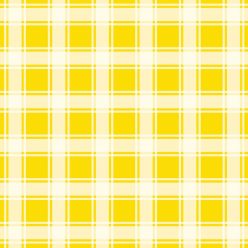A Design Perspective on Information Technology
Jonas Löwgren and Erik Stolterman
This was another eye-opening read. The more I delve into this realm we call the art world, the more I find out that I have no idea how big it actually is. You can even say it is infinite. There is so much to being an artist, a designer, than to just make something pretty.
This time, I learnt about being a responsible, thoughtful designer.
This excerpt talks in terms of digital artifacts, which according to it, constitute the environment and nature in which we live. They play a huge role in accompanying us in our day to day activities, be it at home or at work. They influence our development, the way we think, the way we manoeuvre this world.
To design digital artifacts is to design people’s lives.
Whoa.
The truth weighed in on me. I hadn’t realised how much power there is in design. In the physical world, I take a look at my surroundings. I’m in a classroom. I am using a laptop, on a table. I sit on a chair. There are lights above me that illuminate the room. The door is next to me. The whiteboard is across me. I take a sip from my bottle. I needed that.
Every single thing was invented, designed by someone. And now it’s an irreplaceable part of everyone’s lives.
Other than that, there are also interfaces. There are so many things whose way of interaction we are already familiar with. We know how to open a door using the handle, knob or even just using the act of pushing. We know how to interpret the clock. We know how to fill a bottle and use it. Similarly, there are interactions in the digital world that we learn and we are familiar with, because we’ve lived with it our whole lives.
Being a thoughtful designer: being reflective
Well at least I’m somewhere. Reflecting upon this read got me reflecting on my experience as a consumer and a user, other than as an artist.
It urges me to think about my role as an artist or designer. What are the results, good or bad, of doing design in different ways?
Being thoughtful: caring for your own design abilities, designs you produce, how the world will be changed by your design ideas and decisions.
There is an interesting idea of understanding design as knowledge construction, where the main “products” are not artifacts, but knowledge. I can see why, since it does become information that we users learn over time.
In this knowledge construction, there is an important factor, which is articulation – a requirement so that people can actually respond to the artifact or work. Otherwise, how would people interact with it? There needs to be a degree of clarity and understanding.
Looking at how rapid technology is advancing, it may be plausible to say, what is the point of being reflective, dwelling on meaning, when things are constantly changing? New technology is being developed everyday.
However, in the midst of evolving technology, there is still an essential role of being thoughtful and reflective. The impact is still right there, having something constantly changing does not diminish the importance or influence of design on human lives. Design is complex that way.
It is more so complex especially when in this age, everyone is more open on ideas and concepts. The design of digital artefacts is largely unbounded. As interaction designers, what is our material???
Even language is considered a material, no? Novels, manuals, prayers, poems, fantasy worlds, constitutions, textbooks.
Our bodies can be materials too. In interaction design, is not the action, the moments, the body materials too?
the designer wields significant power, and with such power comes responsibility.
This is where it hit me how important the role of a designer is. But…
What is Good Design?
fast, efficient
understandability
user interface intelligibility
basic functions satisfy user needs
intelligent, adaptive
problem-solving capabilities
slow or fast
What are the intentions and expectations in specific situations? Are users novice or experienced? What are the ideological considerations – democratic, cultural, environmental?
To achieve good design, there is a never ending process of thoughtful reflection.
Core Concepts
INTERACTION DESIGN – DESIGN PROCESS – DESIGN SITUATION – DIGITAL ARTIFACT
The designer is the one who actively takes part in the shaping of the digital artifact, while the client is the one who contracts the designer, a.k.a. the money machine and the one who makes the final decisions. The user, meanwhile, is the one who will use the implemented design artifact.
What Is Design Theory?
Design theory is seen as a way to specify the outcome of the design process.
Several design theories advocate an environmental approach – influencing design work in the direction of more environmentally sound products. This I feel, is meaningful because the environmental threat is a real one, if we aren’t going to take care of the world we live in, who will?
In any case, every theory is formulated with an intention and a purpose, so it is also important to discuss design in a way that helps interaction design.
A First Sketch of the Design Process
Combination of three elements: designer, resources, situation.
Every design is a change of our life world; the designer influences our overall experience of the world as a pleasant or ugly place to spend our lives in
“With designed artifacts, processes, systems, and structures we decide our relations with each other, society, and nature.”
“Every digital artifact restricts our space of possible actions by permitting certain actions, promoting certain skills, and focusing on certain outcomes. To some extent, the user has to adapt to the artifact.”
Design includes responsibility, because it deals with profound and existential issues in a very tangible way. It is something that directly affects human lives.
Design and Society
Every design, however small, is a part of what can be seen as the largest design project of them all – the joint design of the world as a place for human life.
In designing, there are technical, social, ideological and political consequences. These are what we should consider as a designer, as designers have the power to change and influence the development of society.
As an artist, do we have the same responsibility?
I feel that at least to a certain extent, we do. Just as humans, our actions have consequences. Similarly, as artists, our works have consequences too. Good or bad, it’s usually not up to us to decide, but at least we have the power to influence the outcome.
An example of a work which I feel reflected some points in this reading is Strawpocalypse by photographer Benjamin Von Wong.

Bringing back up some references from the Social Practice Art reading, this installation cannot exactly be said to constitute a whole social environmental movement, but to some extent I feel that it is, or at least supports an existing effort to be more mindful of our waste production, of our environment.
I feel that the process of making this installation itself reflects thoughtful interaction design. The way they collected used straws instead of using new ones itself is thoughtful. This is not new, of course, making art through recycling or upcycling.
The result of the installation is something impactful, putting humans in a smaller scale, highlighting the magnitude of this environmental issue.
